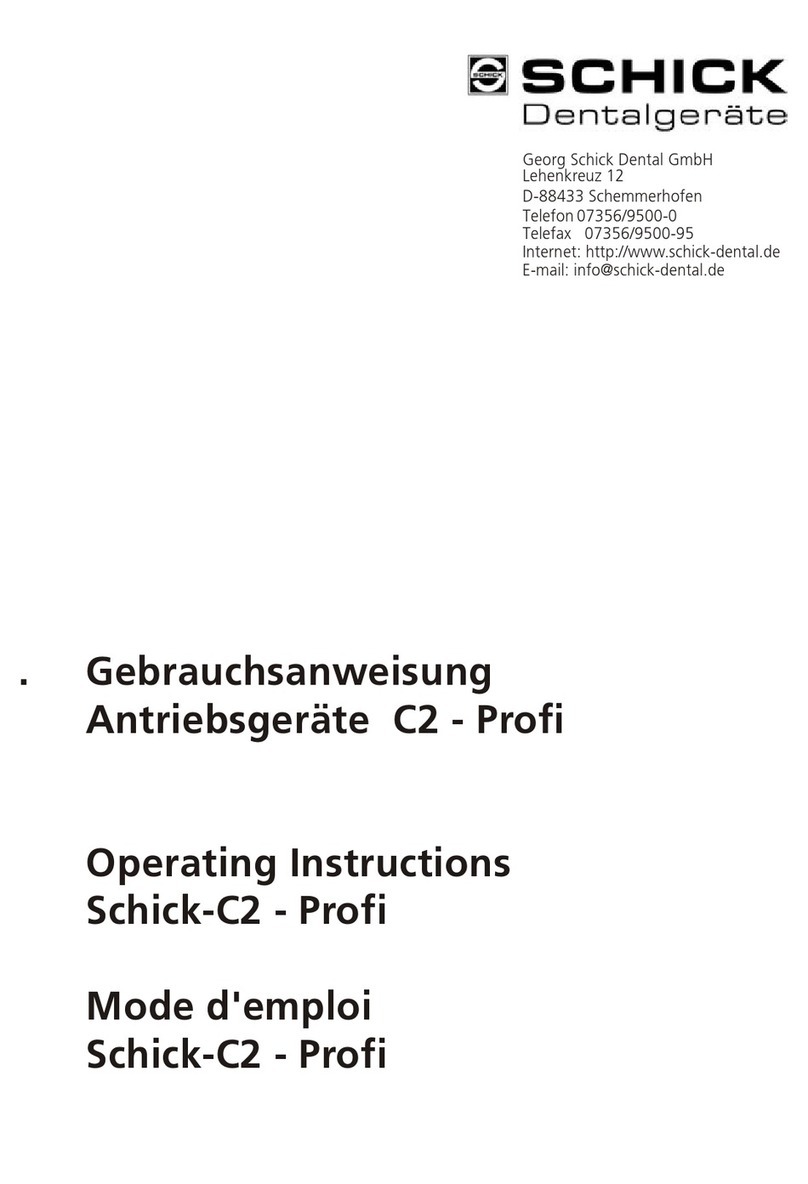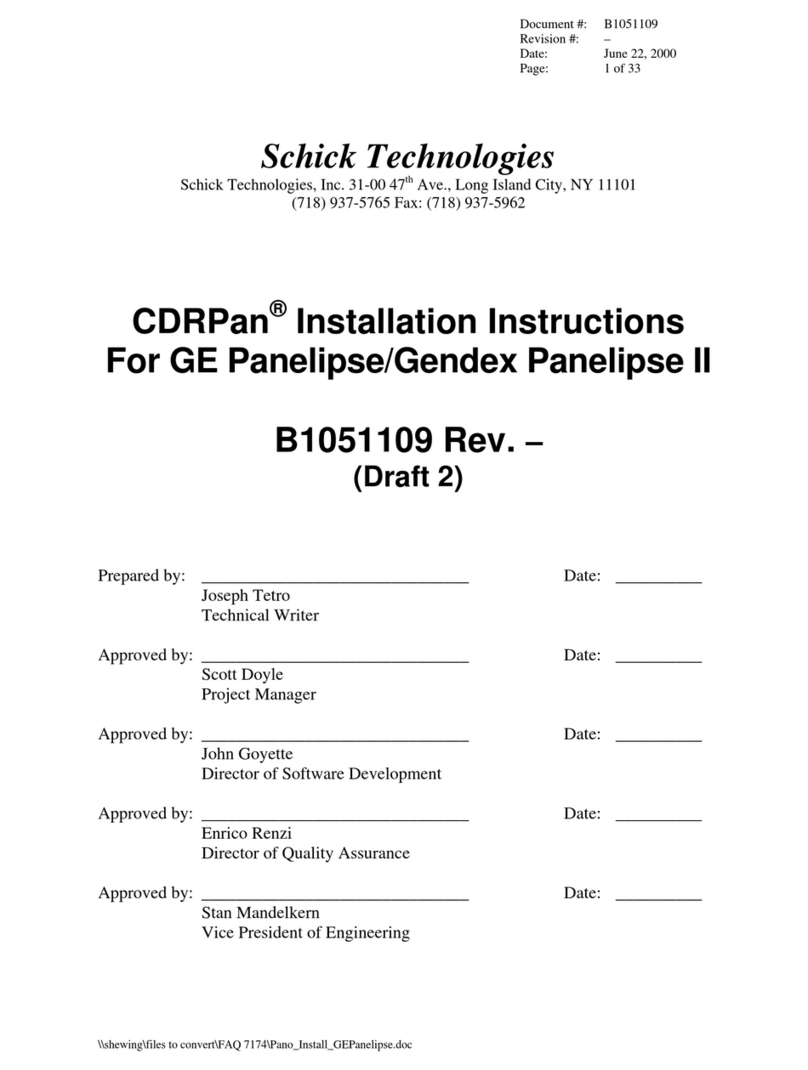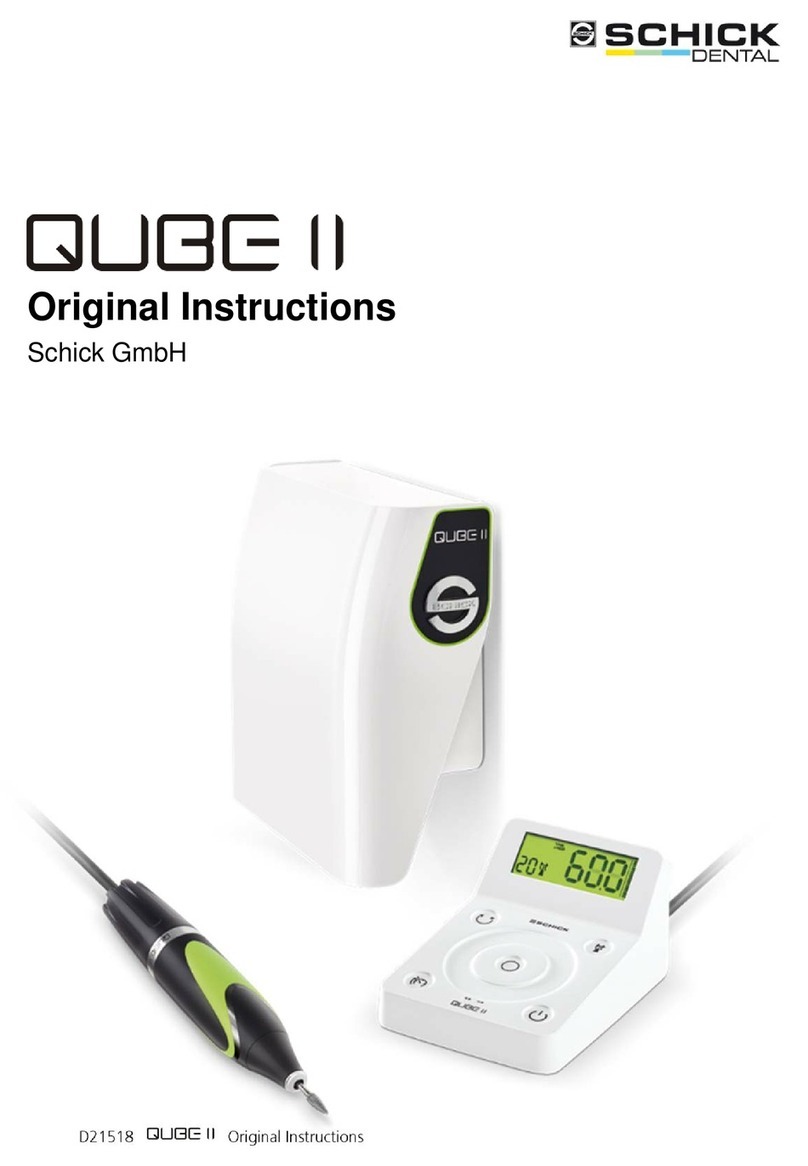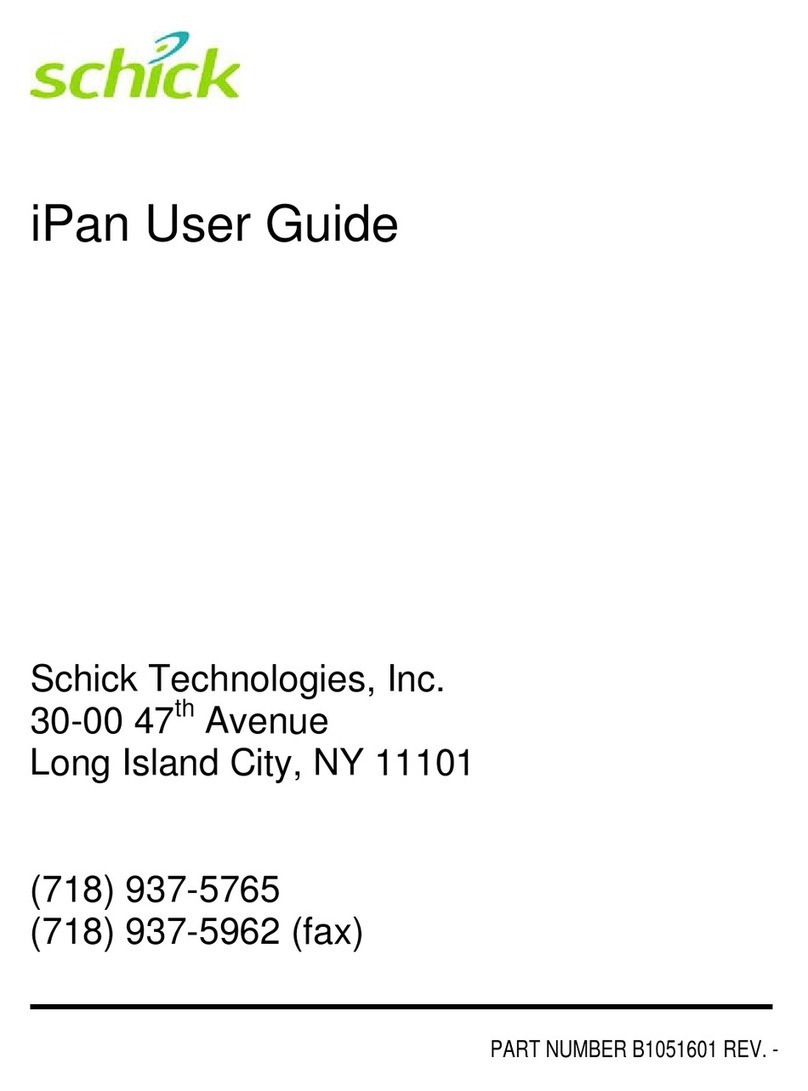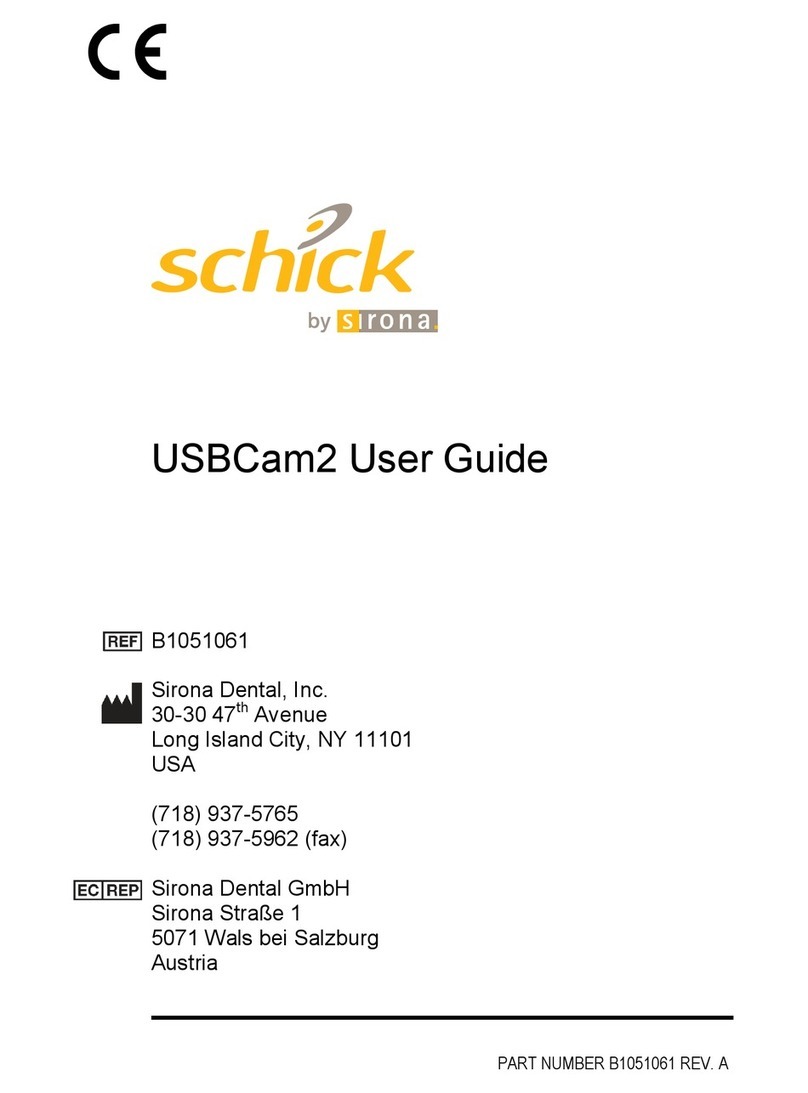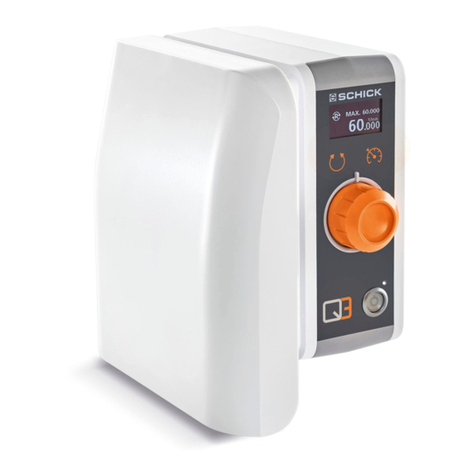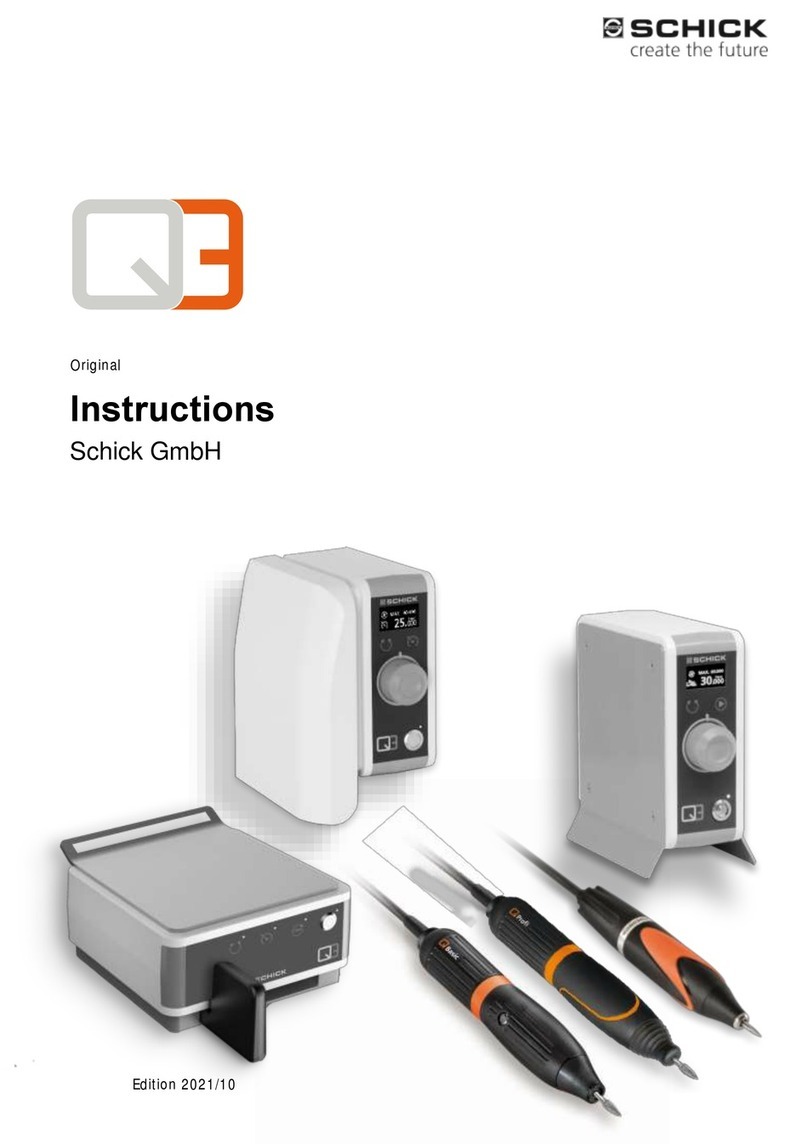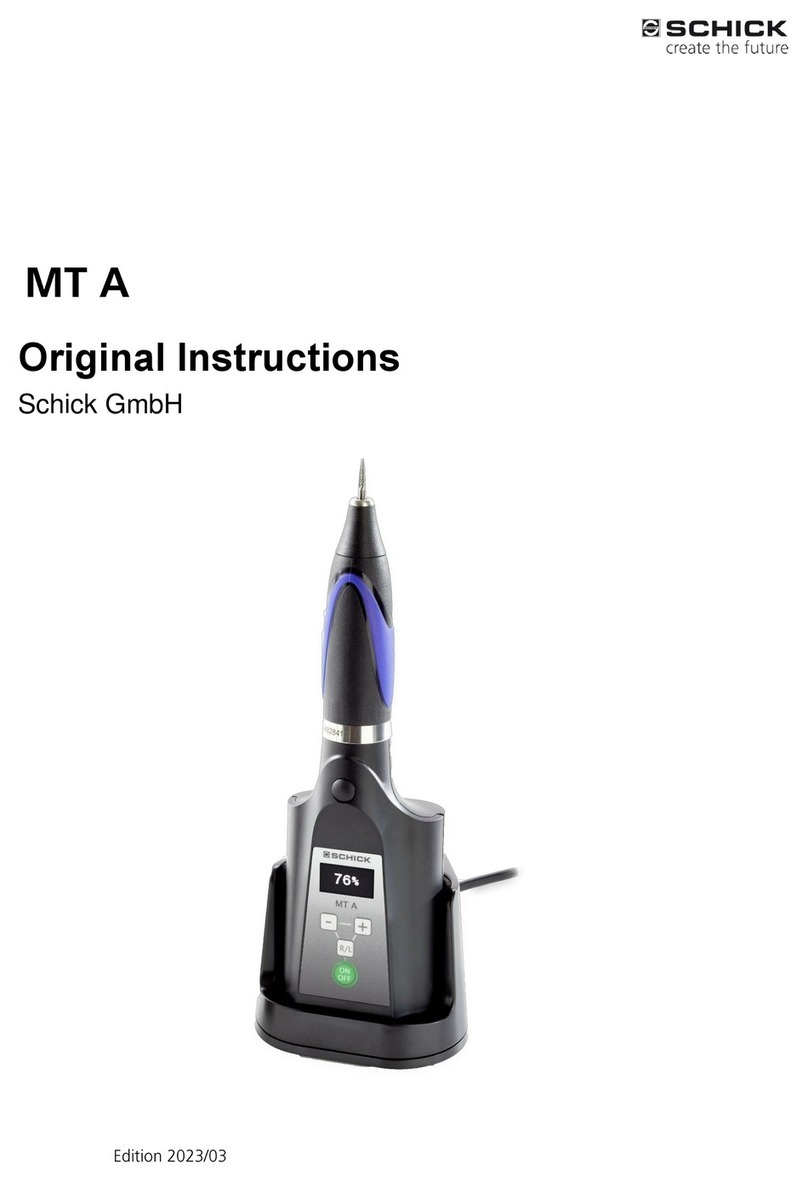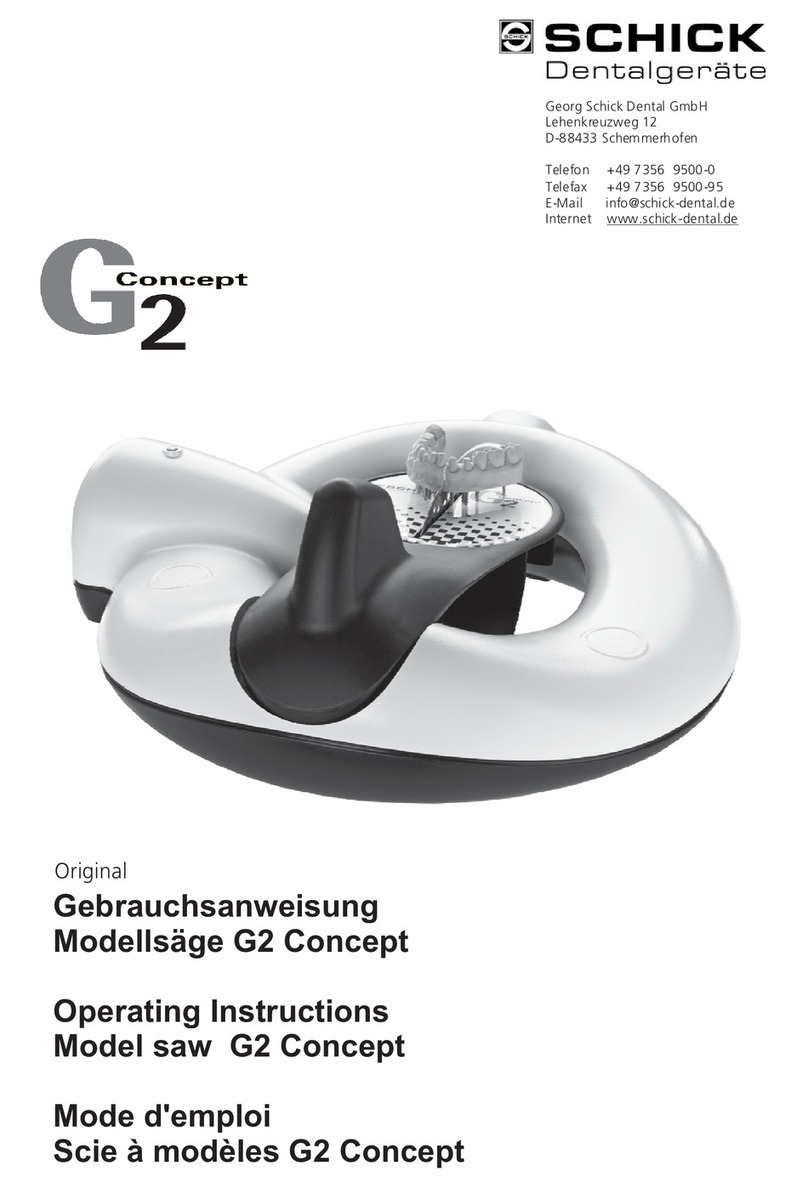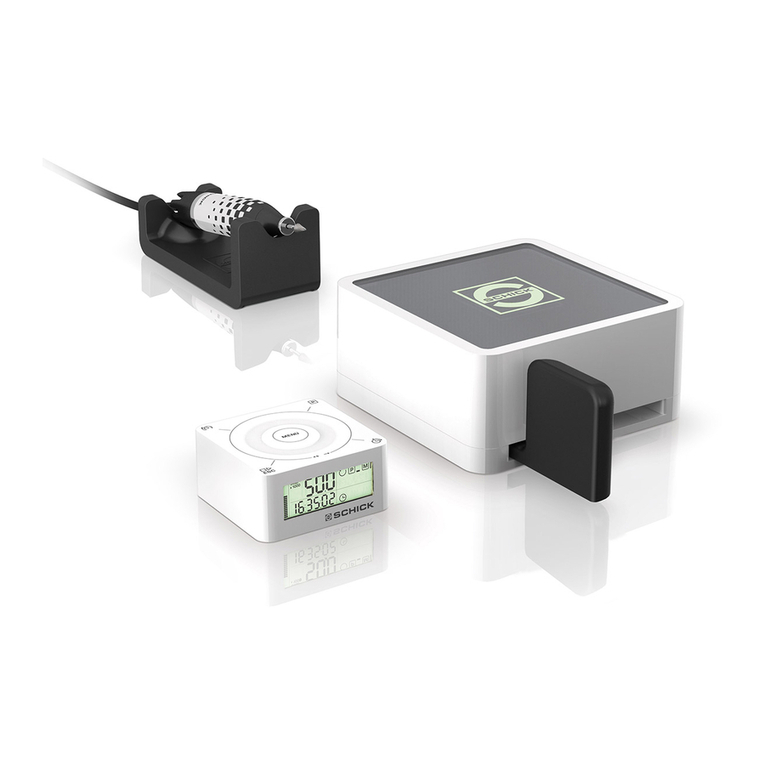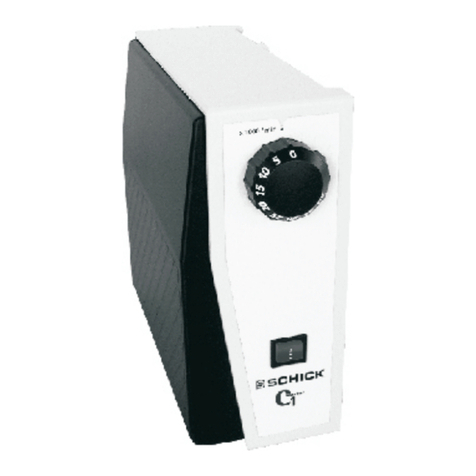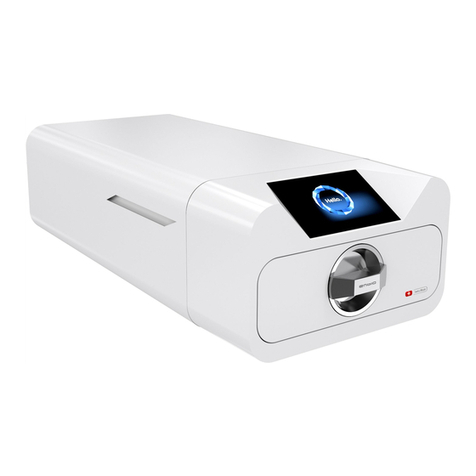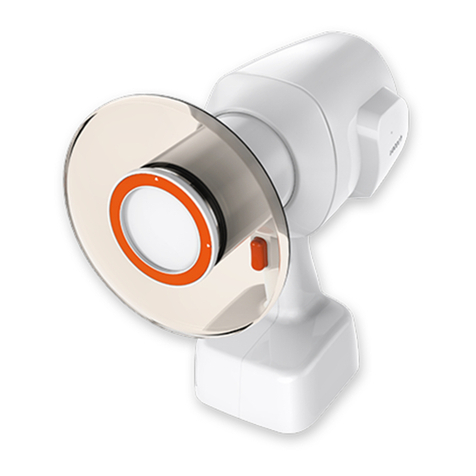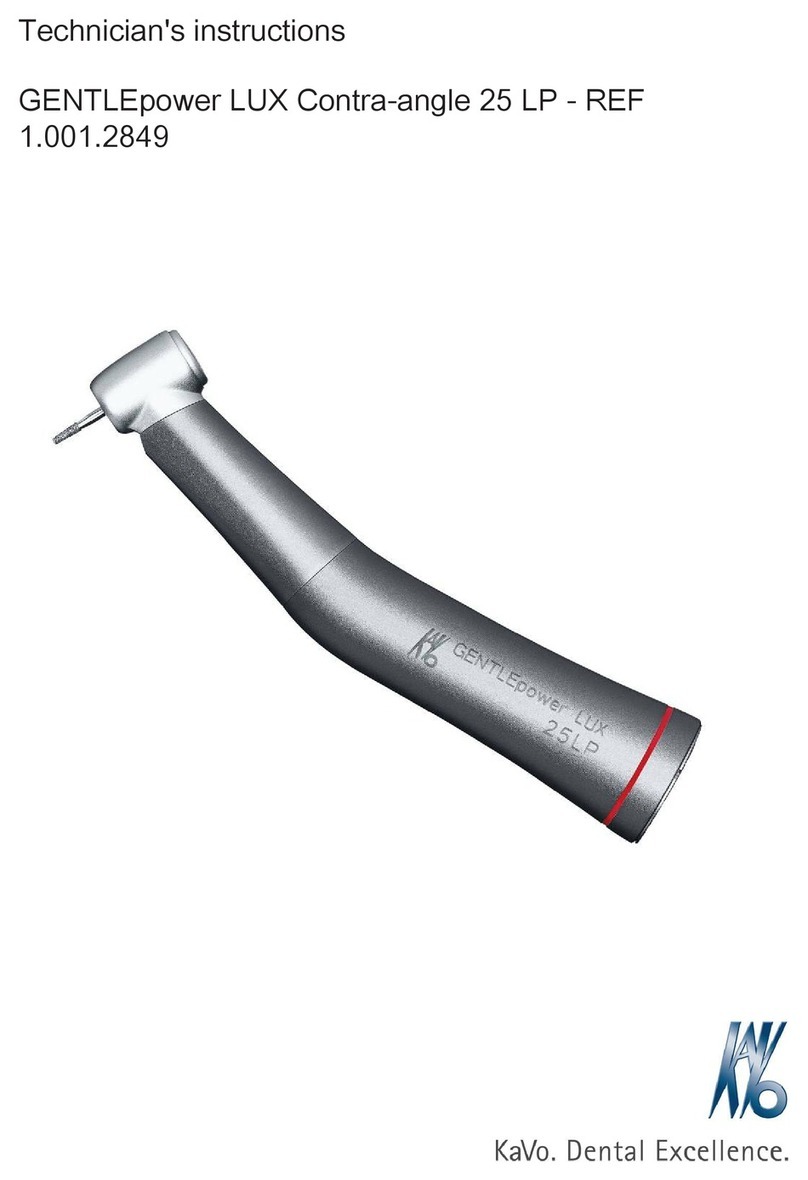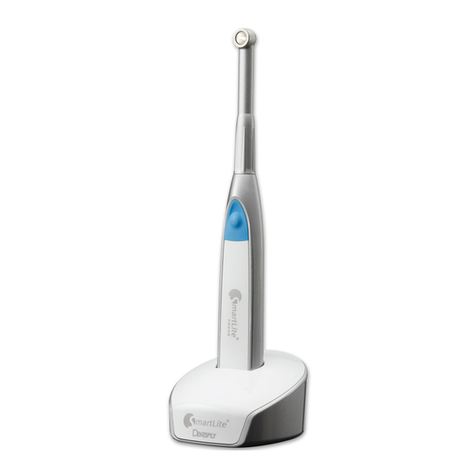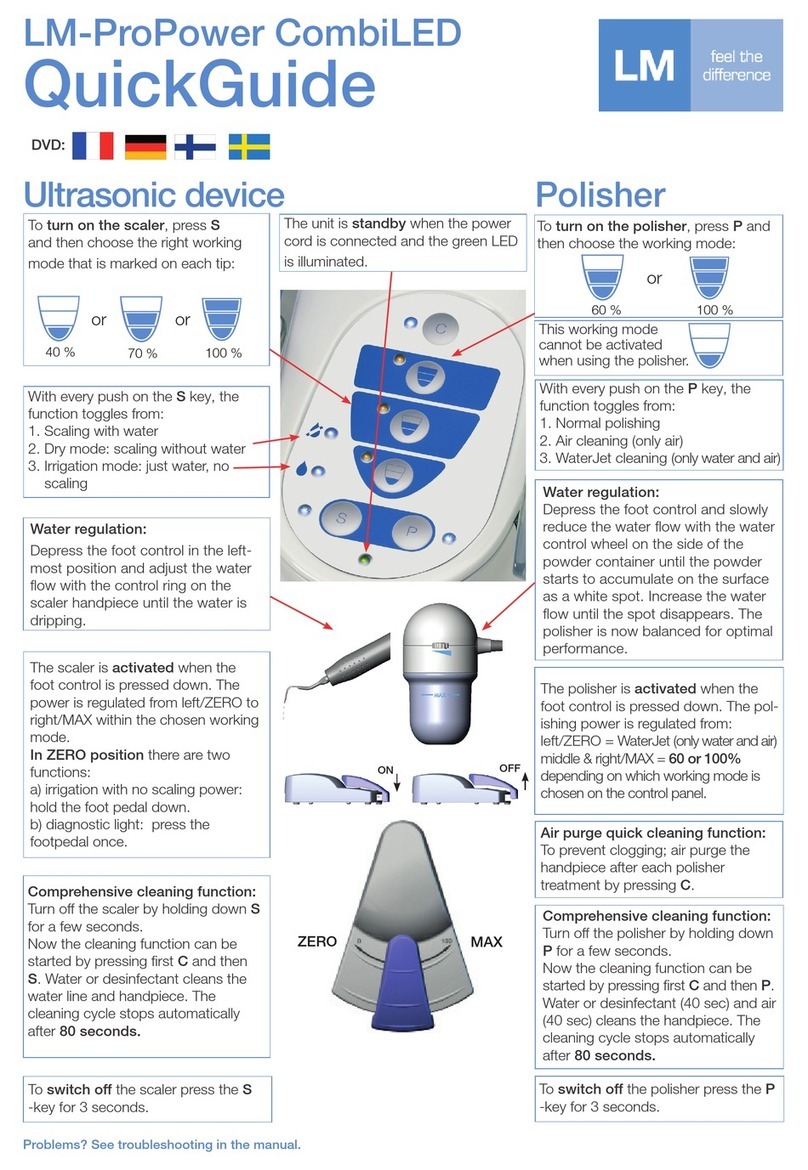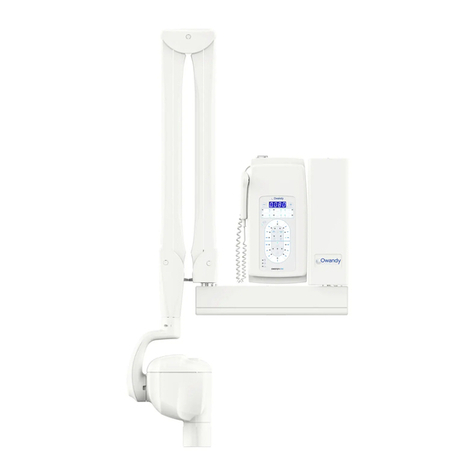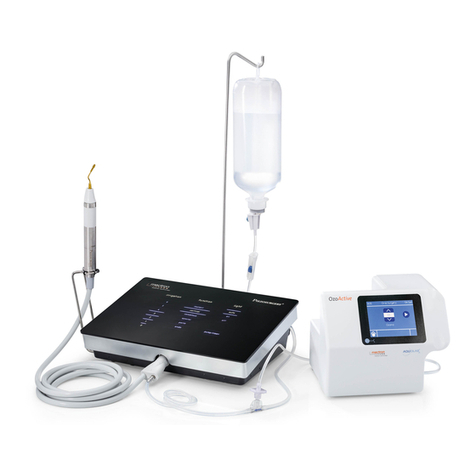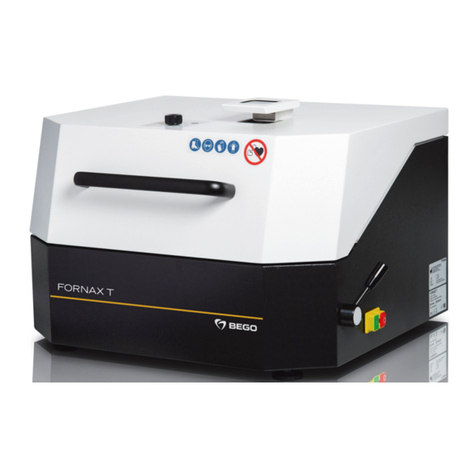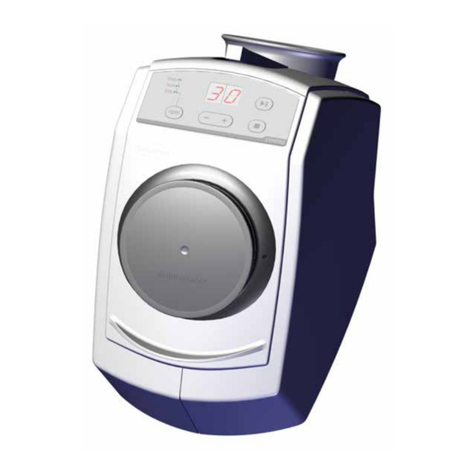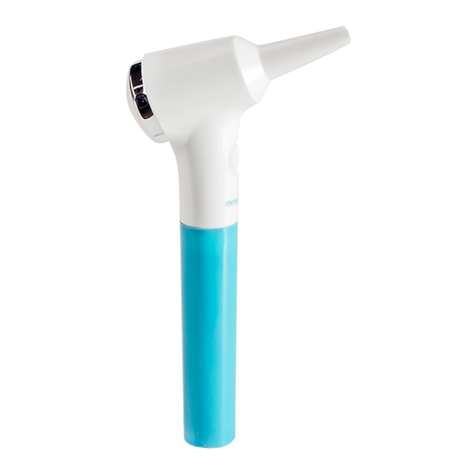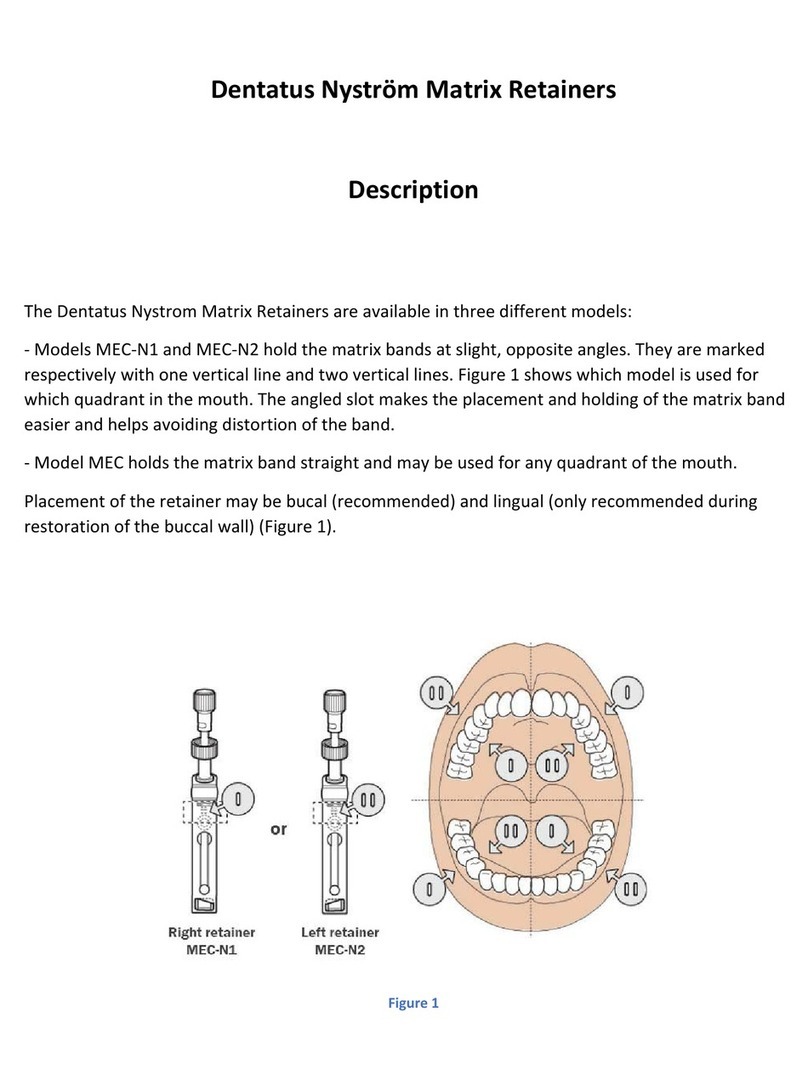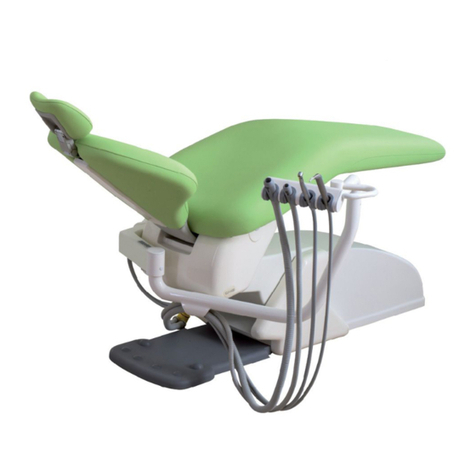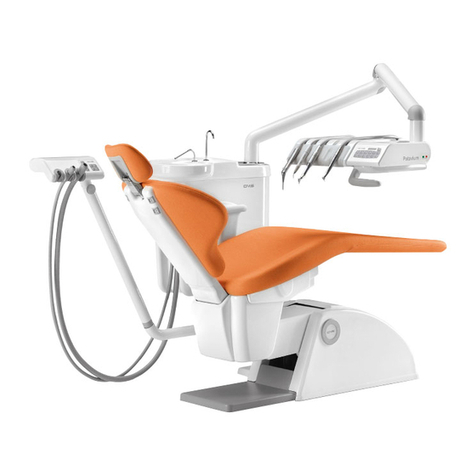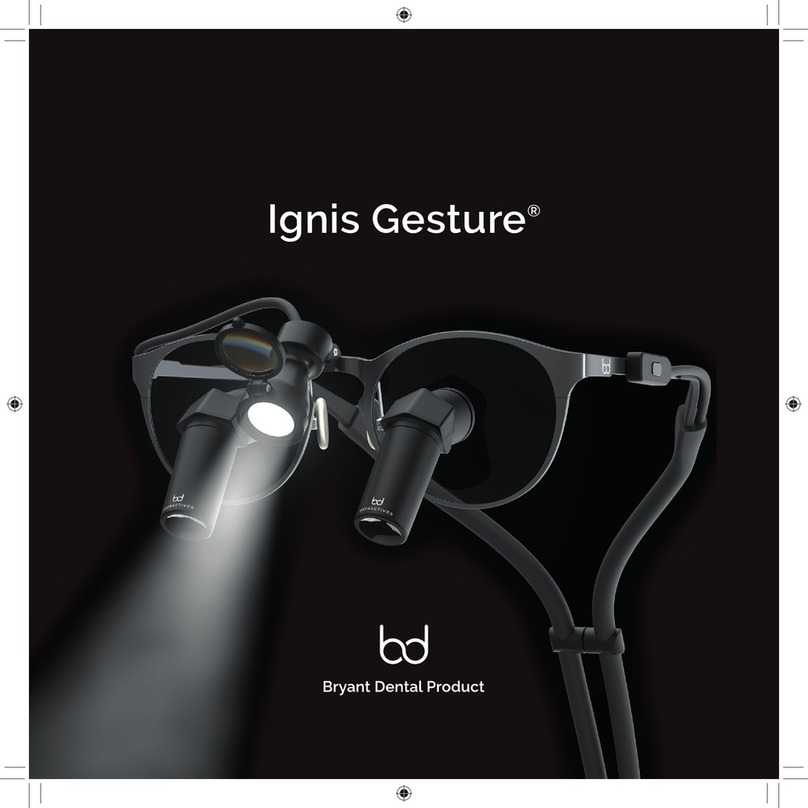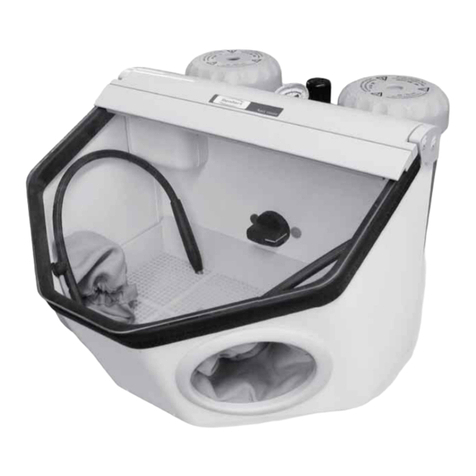
Operation
Mains switch
To activate the electric press mains switch (4) “ON”. The switch itself becomes
shining. Now all electrical functions are controllable. To switch the unit off press
mains switch (4) “OFF” again.
7.1 3D - Milling arm
Jointed arm
Fastening and loosening of the arm by the electro-magnetic
couplings is done with the foot switch (6). An additional, third
articulation is loosened by turning the thumb screw (15) slightly
to the left.
Then the milling arm can be adjusted and locked again in any desired
position. When work is finished the milling arm can be put into a
“parking position” - also when the jointed arm is not in use for
longer time (pict. 2). Before activating the mains switch put milling
arm into this position (left side stop).
A permanent magnet locks the arm. This is to avoid un unintended
swing out of the milling arm when the unit is switched off.
The magnetic couplings are inactive after the unit is switched off.
Vertical saddle
The vertical saddle (38) is to be fixed with a knurdel srew (8) in any
position. On the top of this saddle there is the grip sleeve to adjust
the depth stop (9).
The tension of the spring (10) in the vertical saddle can individually
be adjusted at the bottom of the milling arm (40) (see point 7.5;
page 12) using the supplied hexagon head socket wrench w.a.f. 4.
The spindle for depth stop (9) shows a radial graduation
of 50 x 0,01 mm and an axial graduation of 0,5 mm.
One complete rotation of this spindle is a travel of 0,5 mm.
The vertical way of the saddle is 24 mm.
The drill-lever (11) can be screwed out if required.
Milling spindle
To remove the milling spindle detach light equipment and loosen
knurled nut (13) (pull spindle out upwards). To detach the light
equipment loosen knurled screw (16) (pict.. 1) and pull light
equipment carefully down.
Put light equipment on again in reverse order.
When putting on the light equipment please take care that the
connections click into place !
pict. 1
pict. 2
pict. 3
16
13
12
9
10
11
15
8
31
38
7. Operation
Attention:: when the unit is switched off the magnetic couplings are no
longer activated ! Put the milling arm into the resting position
9
